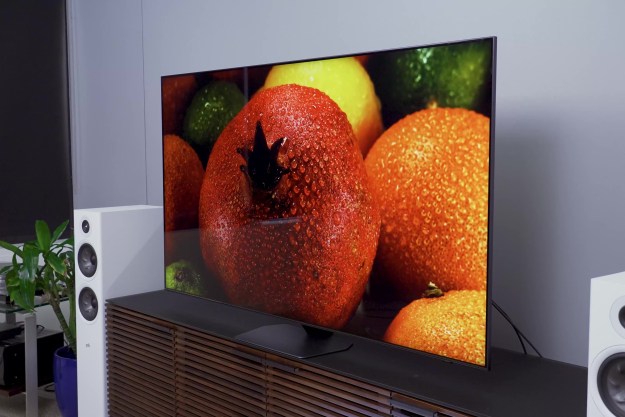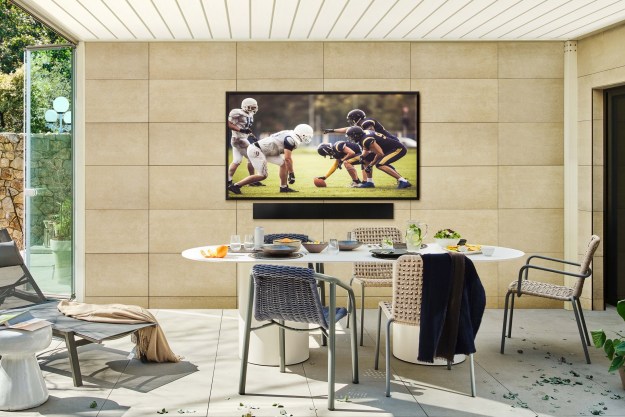
Samsung will exit the U.S. Blu-ray player market — and has abandoned plans to introduce a new high-end 4K Ultra HD Blu-ray model that was originally meant for release later this year.
“Samsung will no longer introduce new Blu-ray or 4K Blu-ray player models in the U.S. market,” a Samsung spokesperson confirmed to Digital Trends. The statement implies that the company might continue to offer the devices in overseas markets like Europe, or even in neighboring markets like Canada and Mexico.
The move to stop making 4K Blu-ray players was originally reported by Forbes, with Samsung later confirming it will stop releasing all new Blu-ray players stateside. This comes shortly after Chinese maker Oppo Digital decided to do the same thing last year. The news is a little worrying for what it might say about the state of the still-young 4K Ultra HD Blu-ray disc market.
Normally, seeing a major brand like Samsung abandon an entire market would be a sure sign that the category was in trouble. After all, if Samsung can’t make money in a consumer tech area like home theater — which it has been dominating along with LG for years — how healthy could that market be? Yet, while regular Blu-ray may be growing stale, stats for 4K Blu-ray tell the opposite story: Sales of Ultra HD Blu-ray discs are on the rise, and support for the format from major Hollywood studios hasn’t ebbed at all, even though not every new movie is released as an Ultra HD Blu-ray.
Sales of 4K Ultra HD Blu-ray discs “soared 68 percent” in the third quarter of 2018, from the same quarter in 2017, according to a report by Variety, which cited these numbers from DEG: The Digital Entertainment Group. The report goes on to cite other positive-sounding stats, like this one: “4K UHD discs already account for almost one in 10 new release discs sold in the U.S,” according to Eddie Cunningham, president of Universal Pictures Home Entertainment, and: “[UHD] Product sales are up 87 percent in comparison to the first three quarters of last year,” said Bob Buchi, president, worldwide, Paramount Home Media Distribution.
So why would Oppo and Samsung see this as a market they can’t compete in? Perhaps the answer lies in the sales numbers for 4K UHD Blu-ray players. Despite being the first company to sell a player for the format, Samsung may have encountered an unexpected amount of competition from Sony, LG, and Panasonic. These companies top our list of recommended 4K UHD Blu-ray players.
It’s also possible that Microsoft’s Xbox One consoles have put more pressure on the dedicated player market than previously thought. DEG claims that 2.3 million Ultra HD Blu-ray playback devices were sold in the first nine months of 2018, but this number includes both dedicated players and game consoles. Given that NPD video game analyst Mat Piscatella claims that 2018 was phenomenal for the Xbox One X in particular, it could simply be that Samsung got squeezed out.
One can’t help but wonder what this may mean for the larger physical media space as a whole. Predictions of the death of physical media have been almost as common as predictions of the death of email, and so far both have proven wrong. Even the now-ancient DVD format continues to enjoy a large share of disc sales at nearly 58 percent.
That stat notwithstanding, it’s hard to ignore the growing amount of streaming media that is not only showing up in 4K, but also in HDR, which is fast becoming a bigger draw for people who have bought new TVs in the last three years. Sony has even claimed that the reason neither the PS4 or PS4 Pro can play 4K Ultra HD discs is that streaming media was seen as the preferred way of watching these kinds of movies. Needless to say, that hardly explains the company’s ongoing dedicated player production.
If physical 4K UHD Blu-ray discs did end up on the extinct list, it could be a dark time for A/V enthusiasts. Despite growing support for
Updated after confirmation from Samsung that it will no longer release new Blu-ray or 4K Ultra HD Blu-ray players in the U.S.
Editors' Recommendations
- Samsung’s new 98-inch DU9000 4K TV is just $4,000. Can it beat TCL and Hisense?
- You Asked: tone mapping, bad Blu-ray players, mini-LED vs. microLED, and TCL X955
- You Asked: Samsung QD-OLED conundrum, ATSC 3.0, and audio outputs
- You Asked: best streaming device for image quality, plus frame rate control and more
- Vizio’s new Quantum 4K QLED TVs hit 75 inches for $699




